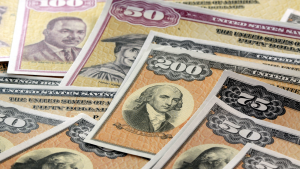Finding ETFs for long-term growth should be your priority if you’re a newer investor. Even for those actively trading stocks to beat the marketing, holding a basket of ETFs for diversification is the best way to balance a portfolio and protect against sector-specific risk.
In particular, diversified ETFs in your portfolio help generate exposure to many markets and asset classes. That exposure helps shield against trouble in other areas. For example, if you hold a tech stock ETF alongside a value stock ETF, the value stock ETF helps offset tech losses. If you expand your ETF holdings further, you can help protect your capital during tough times and generate growth over the long term.
Earlier this year, Morningstar tested a fully diversified portfolio’s 2022 performance. The analysis compared a portfolio of twelve diversified asset classes to stocks, bonds, and a traditional 60/40 portfolio. The fully diversified portfolio beat the alternative in each of the three comparisons.
You may not have the time, interest, or capital to diversify across twelve asset classes like Morningstar tested. Instead, these seven ETFs for long-term growth and diversification are a perfect starting point to build a portfolio able to stand the test of time.
Vanguard Total Stock Market Index Fund ETF (VTI)

Expense ratio: 0.03%, or $3 annually on a $10,000 investment
If you’re a new investor opening your first account, Vanguard Total Stock Market Index Fund ETF (NYSEARCA:VTI) should be your first stop. VTI is preferable to ETFs covering the S&P 500 or other “large” indices because they help capture gains from small-cap stocks and avoid overexposure to a few big winners.
This year, in the S&P 500, the top seven stocks contributed nearly 100% of the index’s gain. As of October 2nd, the index gained 11.69% since January – 10.45% of that came from the top seven companies, with the remaining 493 firms returning a collective 0.12%. Of course, VTI isn’t immune from the same high exposure to those top stocks. But they “only” comprise 21.98% of VTI, compared to nearly 30% of the S&P 500. Reducing exposure to those stocks helps protect against the risk of trouble for any single firm or a collective correction.
But VTI doesn’t just reduce risk – it also helps increase the potential for long-term gains beyond large-cap indices. Over the past 25 years, small-cap stocks (as a group) outperformed large-cap winners. Since VTI holds both, you can access the small-cap market’s growth potential while leveraging their bigger cousins’ stability.
Vanguard Real Estate Index Fund ETF (VNQ)

Expense ratio: 0.12%, or $12 annually on a $10,000 investment
Vanguard Real Estate Index Fund ETF (NYSEARCA:VNQ) is an easy way to access the broad real estate market without buying and leasing commercial properties. VNQ’s main benefit is that it’s an ETF for diversifying a portfolio and offers the same within the ETF.
VNQ’s REIT holdings span many sectors. REIT types include data center and cell tower companies, healthcare REITs, commercial real estate, personal storage, and residential rentals. Real estate is a big market. One sector can outperform others even if the broad “real estate market” is in a downturn. For example, this year, REITs collectively lost 5.6% since January.
Within that group, though, sectors like timberland REITs, industrials, and healthcare returned gains as high as 3%. This demonstrates real estate’s nuances and why VNQ is a perfect ETF for diversification.
Schwab International Dividend Equity ETF (SCHY)

Expense ratio: 0.14%, or $14 annually on a $10,000 investment
A common rule of thumb is to diversify holdings beyond just US-based stocks. However, emerging markets are risky, and picking a handful of international firms is tough due to different structuring and market expectations. To that end, Schwab International Dividend Equity ETF (NYSEARCA:SCHY) is a perfect ETF for diversification beyond American companies.
SCHY prioritizes three core requirements: profitability, low volatility, and a history of hefty cash dividend payments. These criteria ensure the ETF isn’t risking your capital on unprofitable companies taking on debt for one-time dividend payouts or companies frequently cycling between boom and bust periods. Furthermore, SCHY ensures diversification internally by restricting REITs, capping individual stock impact at 4%, sectors at 15%, and emerging markets at 15%.
SCHY’s current 30-day yield is 4.58%, making it competitive with high fixed-income asset classes. At the same time, diversifying your portfolio internationally is a good way to shield yourself from US-specific risks.
iShares 0-5 Year High Yield Corporate Bond ETF (SHYG)

Expense ratio: 0.30%, or $30 annually on a $10,000 investment
To diversify away from stocks, you’ll likely want to hold some bond ETFs (assuming you aren’t comfortable laddering bonds yourself). iShares 0-5 Year High Yield Corporate Bond ETF (NYSEARCA:SHYG) is a risky alternative to the other two bond ETF options we’ll hit next, but one that could pay off in today’s economic climate.
SHYG is a bundle of non-investment grade corporate bonds, often called high-yield or junk bonds. These bonds are issued by well-known corporate giants, such as American Airlines (NASDAQ:AAL) and Uber (NYSE:UBER). Despite their “junk” label due to higher default risk, grouping multiple bonds together allows investors to spread the risk of a single company defaulting.
In order to attract investors, companies issuing junk bonds must offer higher yields compared to more secure investment options. This can be a challenging task, especially in a high-interest-rate environment where even savings accounts yield around 4% or more. Consequently, SHYG offers an impressive 8.69% yield, significantly outperforming Treasuries and money market funds.
SHYG’s short-term holdings compete with Treasury securities of similar maturity, and at present, the Treasury yield curve is inverted. This means that short-term Treasuries yield more than their long-term counterparts. Eventually, the yield curve will normalize, causing short-term yields to decrease, which will, in turn, boost bond prices. This capital gain benefits early investors, who enjoy both high-yield monthly returns and an increase in the bond ETF’s price.
iShares 20 Plus Year Treasury Bond ETF (TLT)

Expense ratio: 0.15%, or $15 annually on a $10,000 investment
Another bond ETF for diversification is the 20 Plus Year Treasury Bond ETF (NASDAQ:TLT). As the name implies, this bond ETF holds long-dated US Treasury bonds. TLT, and Treasury Bonds in general, are in a strange spot today. Driven to record lows by rate hikes, investors are flooding the ETF to capture the upside when rate hikes cease (or drop). The Fed’s “higher for longer” stance will likely suppress TLT’s price. Still, reinvesting monthly distributions makes it easy to execute a dollar-cost-averaging strategy for free. When rates normalize, that patience will be rewarded by a spike in bond prices.
TLT’s current 30-day yield is just shy of 5%. Between SHYG and TLT, investing in these two ETFs for long-term growth is a great way to capture both ends of the bond market while diversifying your portfolio.
iShares 0-3 Month Treasury Bond ETF (SGOV)

Expense ratio: 0.07%, or $7 annually on a $10,000 investment
One mistake newer investors often make is confusing a “cash position” with holding, well, actual cash. And, while you should definitely maintain healthy emergency savings, holding actual cash as an asset is a losing proposition due to inflation. Instead of keeping cash in a checking account, consider a short-term bond ETF like iShares 0-3 Month Treasury Bond ETF (NYSEARCA:SGOV).
This bond ETF invests exclusively in short-term Treasuries, meaning its price is remarkably stable. At the same time, since the yield curve is inverted, this bond ETF returns far more than you’ll see from even a high-yield savings account. SGOV’s current 30-day yield is a whopping 5.28%, essentially risk-free. If you’re keeping cash on the sidelines to buy stocks on sale, worried about a crash, or want to diversify with short-term Treasuries, SGOV is the best ETF alternative to stashing money in your mattress.
abrdn Physical Precious Metals Basket Shares ETF (GLTR)

Expense ratio: 0.60%, or $60 annually on a $10,000 investment
Gold and precious metals are popular diversification tools, but many investors struggle to find good sources to buy physical gold at decent prices. Even if you do, storing that much metal safely is risky. Instead, look to an ETF like abrdn Physical Precious Metals Basket Shares ETF (NYSEARCA:GLTR) for metal-based diversification.
GLTR holds 62% of its weight in gold, 26.8% in silver, 7.34% in palladium, and 3.81% in platinum. This ETF gives investors solid exposure to the most popular precious metals without the risk of stockpiling bars and bricks in their homes. The ETF is up nearly 50% over the past five years and helps investors offset risk in stocks and bonds. And, since gold and metals have a defined finite supply, they act as a solid inflation hedge – critical in today’s inflationary environment.
On the date of publication, Jeremy Flint held a long position in VTI, SGOV, SHYG, and TLT. The opinions expressed in this article are those of the writer, subject to the InvestorPlace.com Publishing Guidelines.
